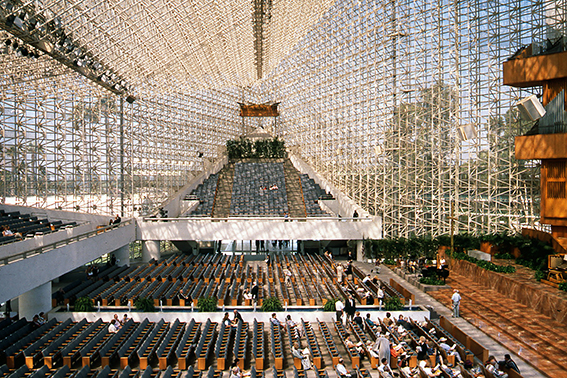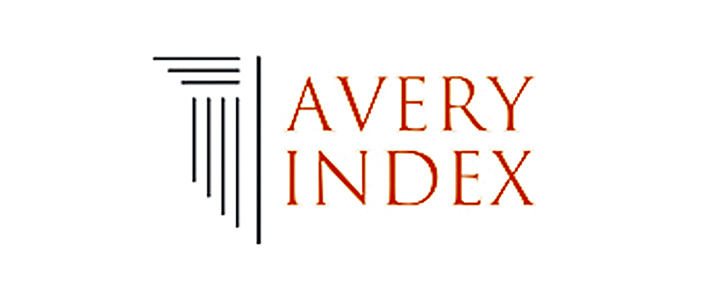Una estrella en el horizonte mediático
Epifanía y postproducción de la Crystal Cathedral
DOI:
https://doi.org/10.17979/aarc.2017.5.0.5145Palabras clave:
Crystal Cathedral, Philip Johnson, tecnologías modernas, arquitectura de vidrio, medios de comunicaciónResumen
El desarrollo de las tecnologías del siglo XX permitió explorar, hasta sus últimas consecuencias, el simbolismo arquitectónico del cristal refulgente. Vinculada a la confesión protestante del reverendo Schuller, e imbuida del «si lo puedes soñar, lo puedes hacer» del célebre telepredicador, la Crystal Cathedral (1975/80) de Philip Johnson despertaba la mística de las arquitecturas alpinas de Bruno Taut bajo el sol perfecto del condado de Disney. Concebido como una estrella alongada, el edificio escondía tras su piel espejada un paisaje rebosante de luz mediterránea, un auténtico Traum aus Glas aeroespacial donde el Angst expresionista dejaba paso al fun californiano. Como supremos sacerdotes mediáticos, cliente y arquitecto trasmutaron la casa de Dios en un gigantesco plató televisivo que sedujo el alma postmoderna de Norteamérica. Recientemente adquirido por la Diócesis de Orange, este insólito espacio será pronto transformado de escenario televangelista a templo católico, de Catedral de Cristal a Catedral de Cristo.
Descargas
Métricas
Citas
Banham, Reyner. 1971. The Architecture of Four Ecologies. London: Allen Lane, The Penguin Press.
Banham, Reyner. 1959. «The Glass Paradise». The Architectural Review 125:87-89.
Bletter, Rosemarie H. 1981. «The Interpretation of the Glass Dream-Expressionist Architecture and the History of the Crystal Metaphor». The Journal of the Society of Architectural Historians 40:20-43.
Conrads, Ulbrich, ed. 1975. Programs and Manifestoes on 20th Century Architecture. Cambdridge: The MIT Press.
David, Lawrence. 1997. «Philip Johnson’s Crystal Cathedral and the Rhetoric of its Free-Form Polyhedral Structure». En Beyond the Cube. The Architecture of Space Frames and Polyhedra, editado por Jean-François Gabriel, 161-188. New York: John Wiley and Sons.
Eliade, Mircea. 1998 [1956]. Lo sagrado y lo profano. Barcelona: Paidós.
Fernández-Galiano Ruiz, Luis. 2002. «Voces de vidrio». Arquitectura Viva 82:3.
Fisher, Robert. 1980. «The Crystal Cathedral: Embodiment of Light and Nature». Architectural Record 168:77-83.
Fujii, Wayne. 1980. «GA Interview: Philip Johnson on Philip Johnson». GA Document 1:12-24.
Garay, Eduardo de. 1947. Los Hospitales en los Estados Unidos. Notas de un viaje de estudios. Madrid: Instituto Nacional de Previsión.
Gebhard, David y Robert Winter. 1965. A Guide to Architecture in Southern California. Los Angeles: Los Angeles County Museum of Art.
George, Timothy. 2013. «From Crystal to Christ: A Once and a Future Cathedral». First Things, 23 de septiembre. Consultado el 6 de julio de 2017. https://www.firstthings.com/web-exclusives/2013/09/from-crystal-to-christ-the-saga-of-a-once-and-future-cathedral.
Haire, Chris. 2014. «Redesigned Christ Cathedral». The Orange County Register, 25 de septiembre. Consultado el 3 de julio de 2017. http://www.ocregister.com/2014/09/25/redesigned-christ-cathedral-youll-be-able-to-see-it-from-a-long-long-way/.
Hawthorne, Christopher. 2016. «The Crystal Cathedral Redesign: Why Tasteful Updates Add up to Architectural Disappointment». Los Angeles Times, 11 de noviembre. Consultado el 20 de julio de 2017. http://www.latimes.com/entertainment/arts/la-ca-cm-crystal-cathedral-20161120-htmlstory.html.
Hines, Thomas S. 2005 [1982]. Richard Neutra and the Search for Modern Architecture. New York: Rizzoli.
Johnson, Philip y John Burgee. 1985. Philip Johnson/ John Burgee: Architecture 1979-1985. New York: Rizzoli.
Johnson, Philip y Robert Schuller. 1980. «Hour of Power. Dedication of the Crystal Cathedral». 14 de septiembre. Consultado el 3 de julio de 2017. https://www.youtube.com/watch?v=IqB39TW4miQ.
Johnson, Philip y Robert Schuller. 1990. «Hour of Power. Dedication of the Crystal Cathedral Bell Tower (Part III)» 16 de septiembre. Consultado el 3 de julio de 2017. https://www.youtube.com/watch?v=r4IZMygtqfk.
Kantor, Sybil G. 2002. Alfred H. Barr, Jr. and the Intellectual Origins of the Museum of Modern Art. Cambridge: The MIT Press.
McCoy, Esther. 1986. «Frank O. Gehry». Progressive Architecture 67:75.
Moore, Charles, Peter Becker y Regula Campell. 1998 [1984]. Los Angeles, the City Observed. Santa Monica: Hennesey + Ingalls.
Mumford, Lewis. 1951. «The Sky Line: Magic with Mirrors I». The New Yorker. 15 de septiembre:84-93.
Mumford, Lewis. 1951. «The Sky Line: Magic with Mirrors II». The New Yorker. 22 de septiembre:99-106.
Nerdinger, Winfried, Manfred Speidel, Kristiana Hartmann y Mattias Schirren. 2001. Bruno Taut, 1880-1938. Milán: Electa.
Pastier, John. 1979. «An Evangelist of Unusual Architectural Aspirations. Twenty Years in a Neutra Church, Dr. Robert Schuller is Building a Johnson Cathedral». AIA Journal 68:49-55.
Scheerbart, Paul. 1998 [1914]. La arquitectura de cristal. Murcia: Colegio Oficial de Aparejadores y Arquitectos Técnicos de Murcia.
Schuller, Robert. 1970. «Hour of Power», KTLA Los Angeles, 1 de febrero (primer programa, grabado el 18 de enero de 1970). Consultado el 3 de julio de 2017. https://www.youtube.com/watch?v=Bs4nTltzyws
Schulze, Franz. 1996 [1994]. Philip Johnson. Life and Work. Chicago: University of Chicago Press.
Tafuri, Manfredo. 1980. La cattedrale sommersa/ Subaqueous Cathedral. Domus 608:8-15.
Time. 1967. «Churches: Drive–In Devotion». Time magazine, 3 de noviembre. Consultado el 26 de mayo de 2017. http://content.time.com/time/magazine/article/0,9171,837478,00.html.
















